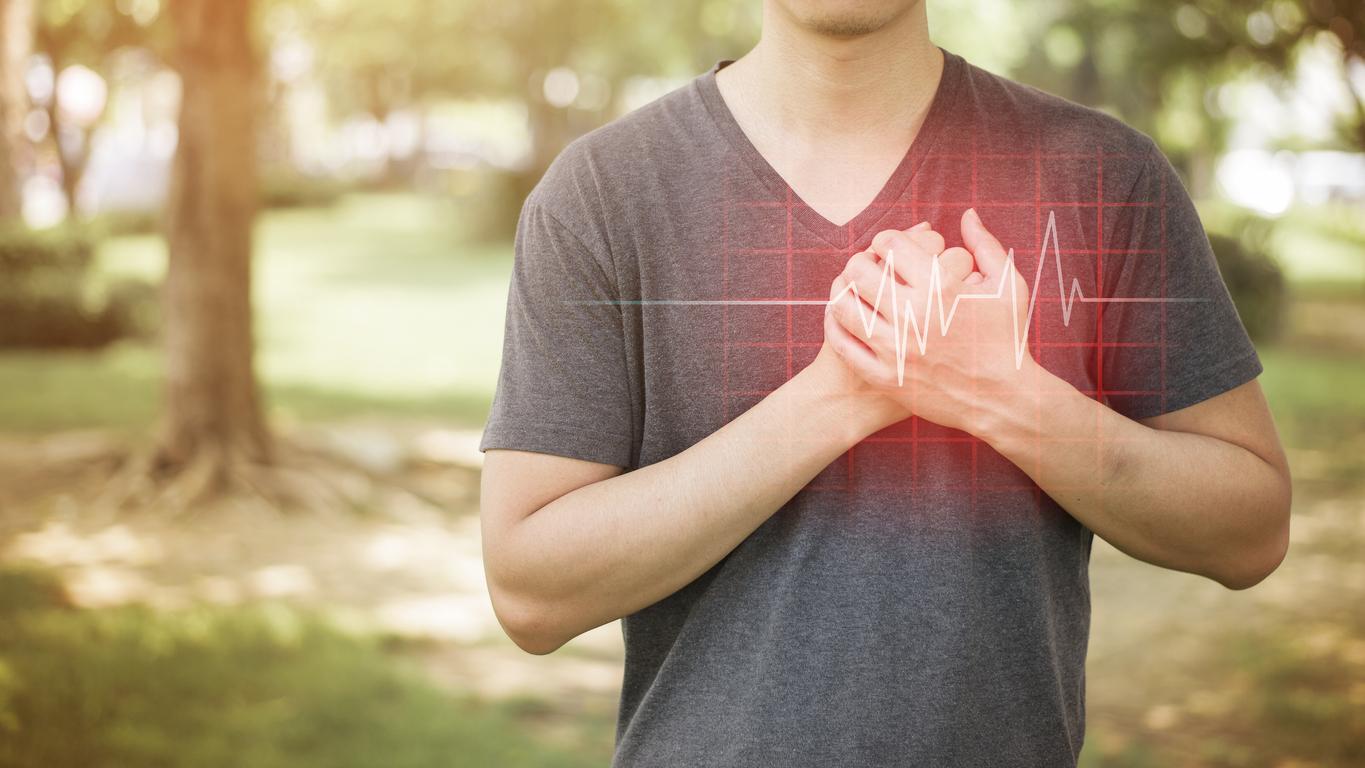
A new medicine
Like someone hammering a red-hot nail into the side of your head. This is what migraines feel like. Millions of people suffer from it. But with the advent of new drugs, there is hope for them.
1. You can’t do anything anymore
One in three women and one in seven men will suffer from migraines in their lifetime. During an attack, they are often disabled for several hours to three days. It is not without reason that migraine is the second most burdensome illness worldwide. Children can also get migraines. Their attacks sometimes start very young, from 5 years. Doctors do not always recognize them as migraines, because they are often accompanied by vomiting and abdominal complaints.
2. More than a headache
Migraine is a severe, throbbing headache on one side of the head. The pain comes on suddenly. Often it doesn’t stop there; patients also suffer from, for example, nausea and hypersensitivity to light and sound. One in three patients see glare, flashes or wavy images at the start of a seizure. Aura symptoms, doctors call it. All in all, migraine is really something different from regular headaches.
3. That’s how it feels
If you’ve never had a migraine, it’s hard to imagine how intense and overwhelming the pain can be. For example, when patients try to put it into words, they say this:
- “It’s like banging my head against a brick wall.”
- “Migraines feel like my head is being taken care of by a boxer.”
- “It looks like someone has put a bowling ball on my eye and is pushing it all the time.”
- “It’s like an ice pick piercing my head.”
- “My head is like a balloon of pain that continues to inflate. He never jumps, but keeps banging for hours.’
- “The only way I can describe it is like my brain suddenly swells up and tries to push through my skull.”
4. Dieting really doesn’t help
Many migraine sufferers have the idea that stress and eating chocolate or cheese, for example, trigger attacks. But that’s not true, says neurologist and biologist Gisela Terwindt, who specializes in headaches. At the Dutch Leiden University Medical Center she not only treats many patients with migraine, she and her colleagues also conduct extensive research into it. “For example, before an attack you can feel gloomy or tired,” she says. “Or get extra appetite for certain foods. That is why patients often think that these are ‘triggers’ for the headache. But in reality it is exactly the other way around. Those feelings are precisely the result of the approaching migraine.”
According to Terwindt, you can compare it to women who feel like eating tasty things just before their period. No one thinks that chocolate causes periods. The same goes for migraines. “There is therefore no scientific evidence that a particular diet can prevent migraines.”
5. Hormones as culprits
Women suffer from migraines three times more often than men. Doctors therefore suspect that female hormones play an important role in the complaints. There are several indications for this. For example, before puberty, more boys than girls have migraines. But once they start to menstruate, girls easily overtake the guys. In addition, women often experience the attacks especially around their period. Medicines also work less well during those periods. In many cases, the symptoms disappear completely during pregnancy. During the transition, as hormone levels go up and down, so do the migraine symptoms.
6. Does taking hormones help?
“We have reason enough to think that sex hormones are major culprits,” says Terwindt. “It probably has something to do with their effect on the blood vessels in the brain. But we don’t know exactly how that works yet. We will be doing extensive research into this in the coming years. If we understand that, the next step is to find out. how we can influence hormones to prevent an attack.” In practice, there is already a lot of experimentation with contraceptives. For example, some women with migraines swear by a hormone IUD. Others find that swallowing the pill helps them. “Until now, however, there is no hard evidence for this,” Terwindt explains. “But we are now researching that too so that in the future we can hopefully offer all women (and men) with migraines a tailor-made treatment.”
7. Did you know?
… the word migraine comes from the Greek ‘hemicrania’? That means ‘half skull’. It refers to the throbbing headache being on one side of the head.
… migraine is a brain disease? The cause is a disruption in the brain. There’s nothing psychological about that.
… a migraine attack can last 4 to 72 hours? Afterwards, patients sometimes feel tired, irritated and less concentrated for days on end.
… a third of migraine patients do not tell others about their illness? They are afraid of being dismissed as an influencer. Or to lose their job if they call in sick again.
8. Means to Prevent an Attack
Standard painkillers such as paracetamol and ibuprofen usually do not help with migraines. Fortunately, in recent decades, researchers have found various means to combat a migraine attack in a targeted manner. In the 1990s, for example, the triptans came on the market: drugs that suppress an upcoming attack. Then scientists discovered that some existing drugs (such as blood pressure lowering and anti-seizure drugs) can have a preventive effect. If migraine sufferers take them daily, they reduce the duration and severity of attacks or even prevent them altogether. Unfortunately, it is not clear which of these drugs works for whom. It can take a lot of time to figure that out. And even then, a solution is not found for everyone. In addition, these drugs often also have side effects.
9. A New Medicine!
People who receive CGRP inhibitors have fewer migraine days. In a small group, the migraine even disappears completely. In terms of treatment, it is sometimes difficult for migraine patients, but there is a glimmer of hope. Recently, new drugs have been developed specifically for migraines.
“CGRP is a protein that plays an important role in a migraine attack,” explains neurologist Gisela Terwindt. “The new drugs are aimed at this protein or the ‘recipients’ to which the protein binds. In this way they prevent headache attacks. Some of the patients benefit greatly from this. If they receive a monthly injection of the CGRP inhibitors , they have fewer migraine days. In a small group, they even disappear completely.”
Not unimportant: in the short term, users hardly experience any side effects. Whether this also applies in the long term remains to be seen; that will only become clear in a few years. “They are certainly not miracle cures,” emphasizes Terwindt. “But it’s definitely a big step forward. I’m hopeful that the medication will make a huge difference for a certain group of patients.” Unfortunately, it is also impossible to predict in advance for these new agents who will work and who will not. More research needs to be done on that. Furthermore, it is still unclear whether the costs (expected to be about 6000 euros per patient per year) for all migraine patients will be reimbursed by the health insurance.
10. How much can you take?
Something strange is going on with migraines. The pills that are supposed to help against this can — if you don’t use them properly — actually make the headache more intense. This applies to ‘normal’ painkillers such as paracetamol or ibuprofen and to triptans. If you take them too often, there is a good chance that the migraine symptoms will worsen. In fact, two-thirds of people with chronic migraines recover after they stop using ‘overuse’.
The rule is that you should not take painkillers more than 15 days a month and no more than 10 days a month on triptans. Do you think this is not enough for you? Then be referred to a neurologist who specializes in headaches. They can help you find the right (dosage of) medicines. In this way you can in many cases at least considerably reduce the complaints.
By the way, you must already be a headache patient if you want to make the ailment worse by taking too much pain relief. So if, for example, you take painkillers as a rheumatoid arthritis patient, but you have never had a headache, you will not provoke a headache.
11. Beware of cannabis oil
If the internet is to be believed, cannabis oil — also known as CBD oil — is a true miracle cure for migraines. But according to Terwindt you have to be very careful with it. “If it doesn’t help, then it won’t do any harm, many people think. But that doesn’t work with migraines. Cannabis can actually cause headaches. My advice is therefore: don’t use it. Are you considering that? with your doctor.”
12. Botox, but not in the cosmetic clinic
Most people know botox as a means of combating wrinkles. But botox also sometimes seems to help people who suffer from migraines for more than half the month. They must first have stopped taking other headache medicines and painkillers. For migraines, you have to have Botox injected into thirty different places around the head every three months, so that it can do its work deep in the brain. This is done by a certified neurologist, who works according to a fixed protocol. Beware: cosmetic clinics that claim they can get rid of your headache with a few pricks are selling you a cat in a poke.
Knowing more?
- on www.hoofdpijn.nl you will find extensive information about migraines. Plus an overview of all headache clinics in the Netherlands.
- In addition to information, the website offers www.allesoverhoofdpijn.nl also experiences and tips.
- The Netherlands also has a Headache Line: 0900 2020 590 (€0.25 p/m). Experienced experts are there ready to answer questions about headaches or listen to your story.
- More about the headache research of the LUMC can be found at: www.lumc.nl/hoofdpijn. You can also read more about CGRP and about hormones and migraines here.

















